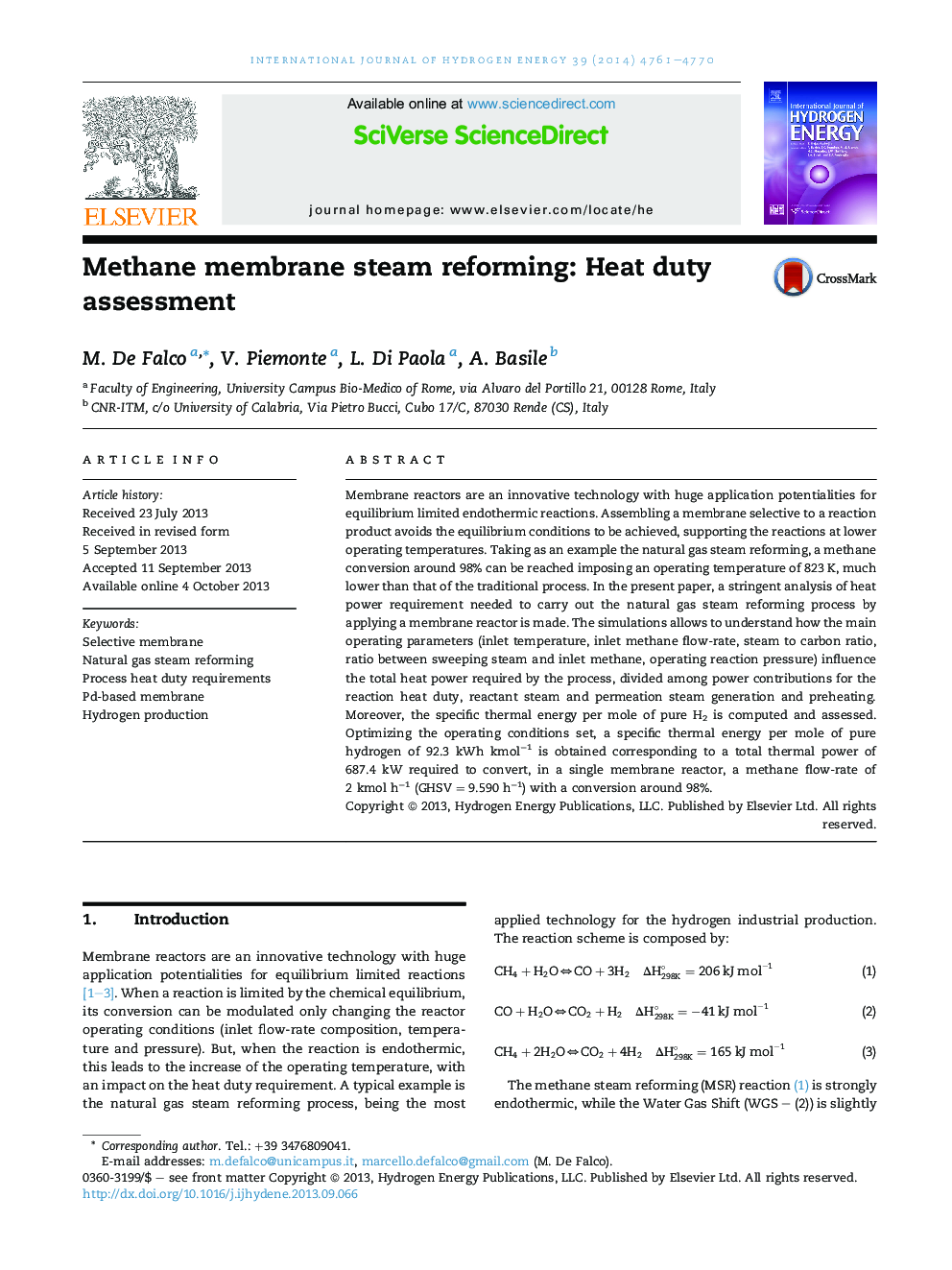| Article ID | Journal | Published Year | Pages | File Type |
|---|---|---|---|---|
| 1270567 | International Journal of Hydrogen Energy | 2014 | 10 Pages |
•A study on the heat duty for methane steam reforming membrane reactor is presented.•The study is based on a two-dimensional pseudo-homogeneous reactor model.•The heat duty for reaction, steam generation and preheating are compared.•Specific thermal energy per mole of pure hydrogen of 92.3 kWh kmol−1 is obtained.
Membrane reactors are an innovative technology with huge application potentialities for equilibrium limited endothermic reactions. Assembling a membrane selective to a reaction product avoids the equilibrium conditions to be achieved, supporting the reactions at lower operating temperatures. Taking as an example the natural gas steam reforming, a methane conversion around 98% can be reached imposing an operating temperature of 823 K, much lower than that of the traditional process. In the present paper, a stringent analysis of heat power requirement needed to carry out the natural gas steam reforming process by applying a membrane reactor is made. The simulations allows to understand how the main operating parameters (inlet temperature, inlet methane flow-rate, steam to carbon ratio, ratio between sweeping steam and inlet methane, operating reaction pressure) influence the total heat power required by the process, divided among power contributions for the reaction heat duty, reactant steam and permeation steam generation and preheating. Moreover, the specific thermal energy per mole of pure H2 is computed and assessed. Optimizing the operating conditions set, a specific thermal energy per mole of pure hydrogen of 92.3 kWh kmol−1 is obtained corresponding to a total thermal power of 687.4 kW required to convert, in a single membrane reactor, a methane flow-rate of 2 kmol h−1 (GHSV = 9.590 h−1) with a conversion around 98%.
